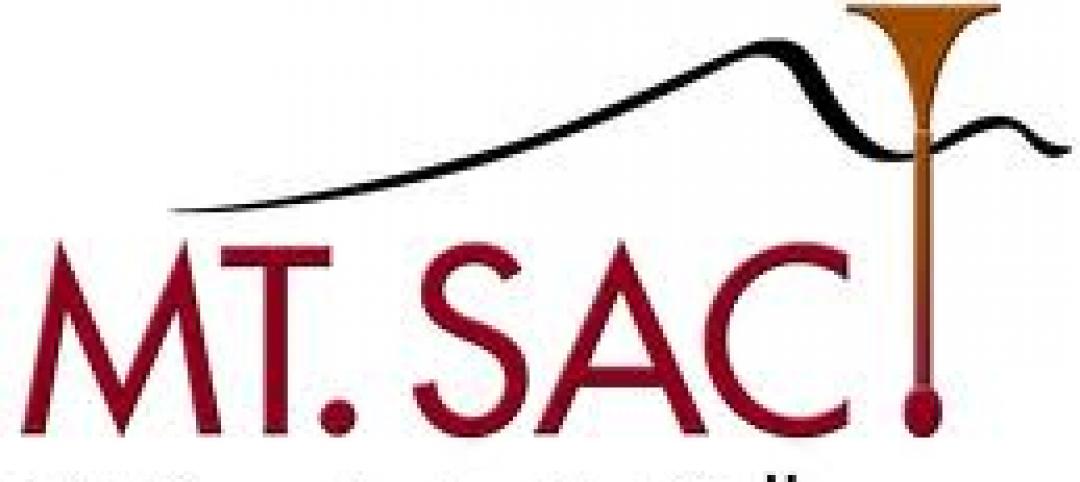For the last 10 years I have been teaching the Professional Practice class in Cornell’s College of Architecture, Art and Planning program in New York City. Over my long career I have also lectured or taught at over 20 other schools. I was also the editor of the current edition of the AIA’s Architecture Student's Handbook of Professional Practice, which is the companion textbook for the course at many schools.
In this one-semester course, I, along with one of my colleagues and guest lecturers from a host of leading firms, do our best to introduce 19 subjects in 13-15 two-hour classes. These are the subject areas that will probably take up the majority of their time should they become senior principals in a successful architectural practice.
1-2 HOURS IS NOT ENOUGH TIME FOR THESE IMPORTANT TOPICS
That means we have only one or two hours to introduce such key subjects as marketing and business development, contracts and other legal issues, organizing and managing design teams to carry out complex projects, land-use regulation and the public approval process, building codes, estimating and scheduling, working internationally, and developing a business plan for a new company or service.
This is not enough time to devote to these crucially important topics. All of the design professions are becoming increasingly complex, yet most architectural schools are not preparing their students to address these changes and their complexity.
Design is, of course, the core of architectural education but even here many programs are not exposing their students to some of the most critical trends they will face when they embark on their careers. As leading companies in many fields have shown, design thinking is important in many more businesses than just the design of buildings. Firms such as Apple, Nike, and GE Medical Systems, as well as the Hasso Plattner Institute of Design at Stanford (commonly known as the d.School) and IDEO, show that design thinking and training are important in many other major sectors of the economy. But so are the complementary skill sets that allow design professionals to be effective and successful.
THE CHANGING NATURE OF TODAY’S ARCHITECTURE STUDENTS
One of the most obvious changes in architectural education in the last 10-15 years is immediately apparent on the first day of class each semester. I usually teach undergraduate BArch students in the fall and graduate MArch students in the spring. Unlike in my time at Cornell, the majority of the students are now women, and often more than half the students, men and women, are foreign-born. Based on the student evaluations we receive, most say they find the class eye opening, interesting, and relevant. They are typically very bright, highly motivated, and fun to teach. I usually hire several each year and stay in touch with many others after graduation. Yet as I follow their careers, it reinforces my belief that we should have done more to prepare them for the unknowns of today’s profession.
Unlike most of my students, I was very lucky in one respect. I had a grandfather (Dwight Perkins, FAIA) and a father (Lawrence Perkins, FAIA) who built large, successful architectural practices. This meant that I was exposed to the realities of my chosen profession even before I attended college. My parents also supported me through a liberal arts degree from Cornell and an MBA from Stanford, in addition to my architectural degree. As a result I started my five-decade career with more of head start than most of my peers. This head start also made me better prepared to deal with the accelerating changes that I found when I entered the profession and prepared me to found and now chair an 1,100-person firm with 22 offices around the world.
When I first became a senior principal in an architectural practice, 10 years before Mary-Jean Eastman and I started Perkins Eastman, the practice of architecture was vastly different from what it is today. The widespread use of computers was more than a decade in the future. Few firms practiced nationally; still fewer practiced internationally. The profession was competitive, but the competition was limited in number, not particularly specialized, and relatively unsophisticated. Few firms had or thought they needed sophisticated accounting, HR, marketing, communications, or technology support personnel. The typical design assignment was much simpler, so architects focused primarily on what the standard AIA contracts refer to as “Basic Services.”
GROWING DEPENDENCE ON TECHNOLOGY AND SPECIALIZATION
Today we are highly dependent on sophisticated technology platforms. More and more firms are competing beyond their local markets; many are working nationally and internationally. There is more competition, and it is far more sophisticated. The size and sophistication of the administrative and technology support personnel at most mid-size to large firms has grown to respond to an increasingly challenging business and technical environment. And the design assignments, project team structures, project delivery methods, and client expectations have become increasingly demanding and complex, requiring much more specialization, larger teams, and a vastly broader array of services.
Architecture and its sibling design professions are, of necessity, having to become much more sophisticated in how they provide design services, while simultaneously becoming much more sophisticated as businesses. When I was in architectural school, Design Studio was the only course that really mattered. Other courses were required for accreditation, of course, but the Professional Practice class, for example, was viewed as so irrelevant that it was assigned to a faculty member that no one wanted teaching an “important” subject.
While most of the non-design courses have grown in importance and relevance, but in most schools Professional Practice and courses in many of the other emerging critical skill sets have not. The curricula in many schools looks too much like the program I attended over 50 years ago except, of course, for the sophisticated digital technology required to practice architecture today.
A MODEST PROPOSAL TO THE ARCHITECTURE SCHOOLS
For all these reasons, I feel it’s time for all architecture schools to recognize the dramatic shifts occurring in practice and change their curricula to better prepare their students for the future. At very least architectural schools should:
– Make it possible for students who want more than an introduction to the many essential subjects that most schools limit to one semester, either by offering the option to take more advanced classes in these subjects or by making courses in the university’s business, law, and other professional schools available as electives.
– Provide more extensive training in the skill sets that are essential in almost every senior AEC position: basic leadership skills, effective presentation skills (oral, written, and visual), how to analyze a basic business problem and develop a plan of action, and how to build, organize, and manage a team of professionals to carry out complex design and construction assignments.
– Introduce what it takes to be successful in the AEC field and career planning early in curricula, so that students have a framework for understanding what they need to learn and what skill sets they need to build a successful career.
Overall there must be more emphasis in architectural curricula on the skill sets that go beyond the core design courses that are (and always will be) central to design education. Today’s architecture students also need training and education to develop other skill sets that will enable them to organize and manage the increasingly complex teams and support structures that it takes to compete for and carry out the ever more challenging assignments our clients are asking us to execute.
ABOUT THE AUTHOR
Bradford Perkins, FAIA, is the Founder and Chairman of Perkins Eastman Architects.
Related Stories
| Jan 30, 2012
Siemens and Air-Ex Team deliver building controls training to Mt. San Antonio College students
Siemens contributes training modules and technology to support hands-on courses.
| Jan 30, 2012
Hollister Construction Services to renovate 30 Montgomery Street in Jersey City, N.J.
Owner Onyx Equities hires firm to oversee comprehensive upgrades of office building.
| Jan 27, 2012
Caterpillar reports record sales and profit for 4Q and full-year 2011
Momentum carries into 2012 with sales and revenues outlook raised to $68 to $72 billion.
| Jan 27, 2012
Smith Seckman Reid opens two new offices
Smith Seckman Reid, Inc. (SSR), an engineering design and facility consulting firm, has opened two new offices, one in Chicago, the other in Washington, D.C.
| Jan 27, 2012
BRB Architects designs new campus center for Molloy College
Intended to be the centerpiece of the College’s transformation from a commuter college to a 24-hour learning community, the “Public Square” will support student life with spaces such as a café, lounges, study rooms, student club space, a bookstore and an art gallery.
| Jan 27, 2012
Columbia University’s New Core Laboratory aims for LEED Silver
Construction manager Sordoni Construction Co. along with the design team of Payette Architects and Vanderweil Engineers will provide design and construction services to renovate the majority of the existing Core Lab building to create the new Lamont Center for Bio-Geochemistry.
| Jan 26, 2012
Three dead, 16 missing in Rio buildings collapse
The buildings, one 20 floors high, collapsed on Wednesday night in a cloud of dust and smoke just one block away from the city's historic Municipal Theater.
| Jan 26, 2012
Siemens launches smoke detection knowledge center
New knowledge center web site demonstrates efficacy of smoke detection.
| Jan 26, 2012
Hendrick Construction completes Osso Restaurant in Charlotte
Designed by François Fossard, Osso's upscale interior includes tapered, twisted decorative columns and an elegant fireplace in the center of the lounge.
| Jan 26, 2012
HOK partners with USGBC on design of Haiti children's center
Passive design principles give form to a sustainable, restorative environment for the children of Haiti.

















